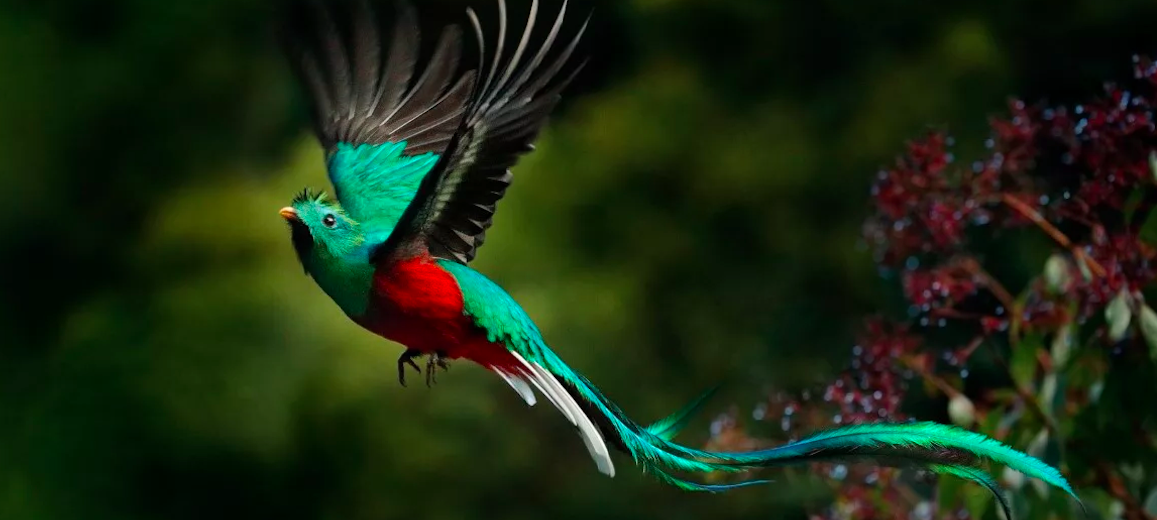
The quetzal is a stunning looking bird that most consider to be one of the world’s most beautiful. Male quetzals grow 2 tail feathers that form an amazing train up to 3 feet long, during mating season! Females lack these feathers, but they do have the same beautiful green, blue, and red coloring of the males. There are 6 known species of these birds and they live in the wooded forests and rainforests of Central and South America at elevations of 4,000 – 10,000 feet. The resplendent quetzal is the national symbol of Guatemala. It’s even what they call their money. This article is on special request from Jenn C.
First the Stats…
Scientific name: Pharomachrus
Weight: Up to 7 ounces
Length: Up to 18 inches, plus the male has a 3 foot long tail
Lifespan: Up to 25 years
Now on to the Facts!
1.) Mayan and Aztec priests wore their feathers during sacred ceremonies.
2.) Costa Rica’s cloud forests are protected lands that preserve habitats for these birds.
3.) The quetzal eats berries, lizards, frogs, and insects.
4.) They have 2 toes facing backwards, and the other 2 facing forwards. This makes walking difficult. So they tend to hop or just fly.
5.) Their primary sounds are chirps, whines, and whistles.
But wait, there’s more on the quetzal!
6.) Quetzals are crepuscular (active at dawn and dusk).
7.) Squirrels, owls, and hawks are their main predators and humans capture them for the pet trade.
Did you know…?
The ancient Aztec and Mayan civilizations of Central and South America viewed the quetzal as a bird that represented wealth and power.
8.) Females lay 2 pale blue eggs and both mom and dad participate in rearing and feeding of their young.
9.) Young quetzals are able to fly at only 3 weeks old!
Now a Short Quetzal Video!
Also, check out the Critter Science YouTube channel. Videos added frequently!
Want to suggest a critter for me to write about? Let me know here.



